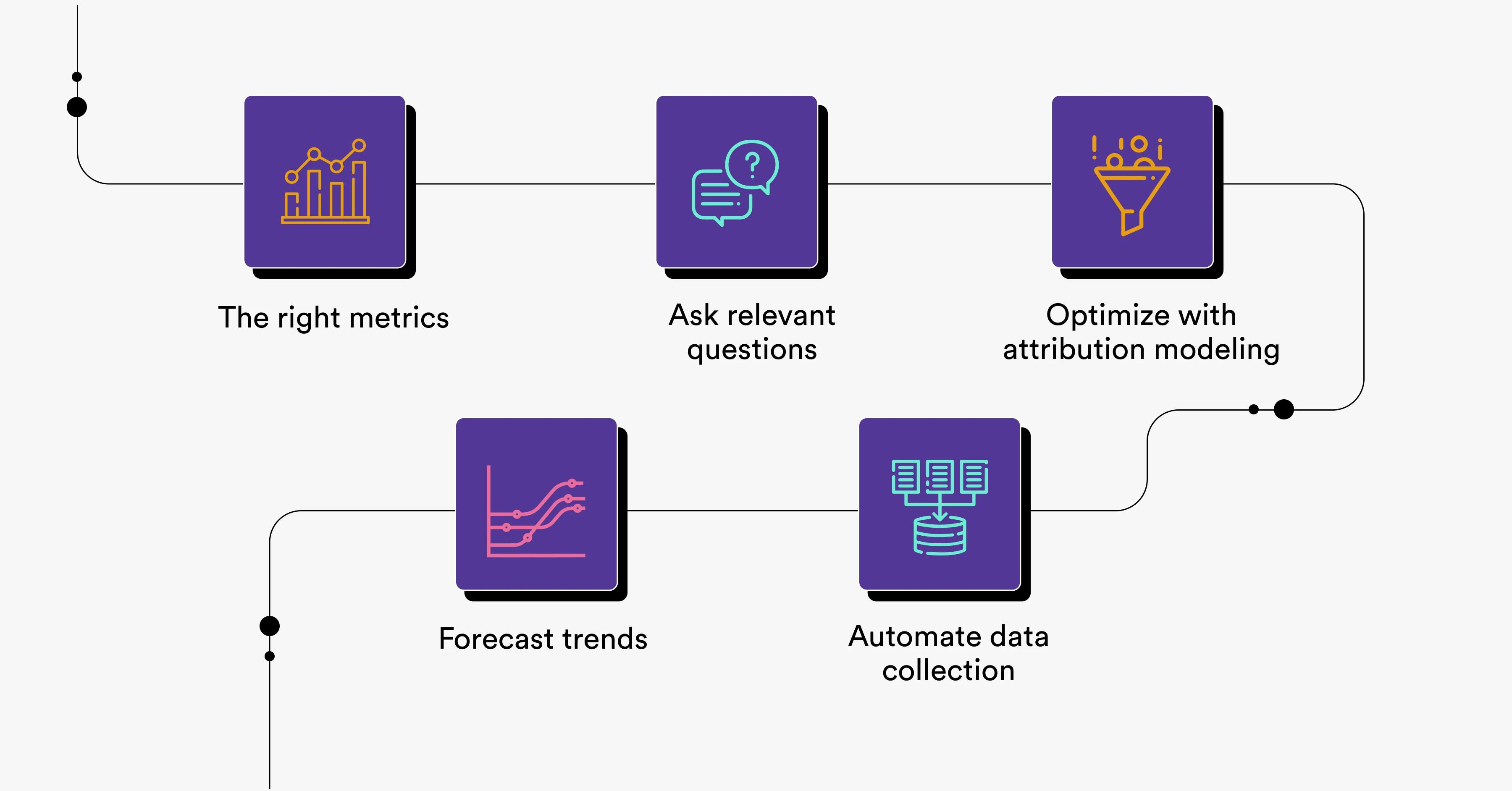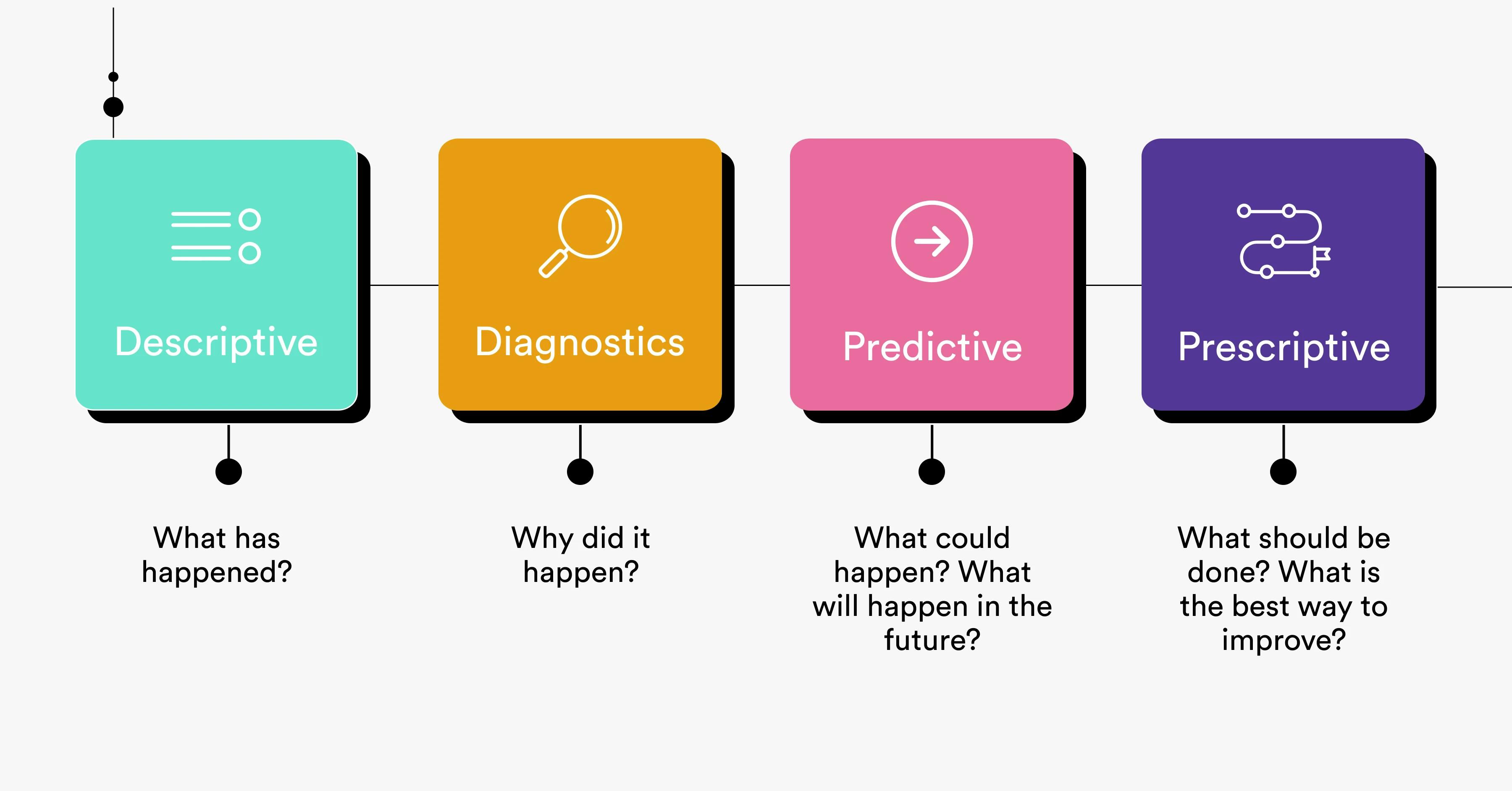With a third of search ads never reaching the promised audience, more than $60 billion of ad spend per year is predicted to be wasted. Despite having access to copious amounts of data about audiences and their behaviors, misplaced expenditure is still happening.
The volume of marketing analytics available to us is ever-growing, and the challenge of juggling insights from increasingly more touch points while still trying to stay on top of multiple data sources often leads to data overwhelm, or worse, apathy.
You might think it’s easy to stay in your comfort zone, doing the same old type of marketing and investing in the same channels. But if your performance is stagnant, that isn’t really helping to drive growth — is it?
Now that we have the ability to track, monitor, and analyze virtually every possible type of audience interaction, why do we still not utilize this information to its fullest potential?
The role of data analytics in marketing
Data analytics in marketing is essentially the process of using data to find patterns and identify opportunities for improvement so you can make the best use of your resources. You can use it to see who your audience is, how they perceive your brand, and what types of messaging resonate with them.
With a data-driven strategy powered by strong marketing analytics, you can understand how prospects interact with your company and which of your marketing strategies have the strongest impact on their behaviors. This enables you to choose where best to focus your future marketing efforts to drive more conversions.
You’re likely already engaged with and performing some form of marketing analytics, be it email or ad campaign analysis, or even tracking your social media performance. But if you start looking more closely at your data, you can dig out invaluable insights that will allow you to further optimize your campaigns and drive up the marketing team’s value for the company.
How can you improve your marketing analytics?
You need to master marketing analytics so that you develop marketing campaigns and strategies that are fine-tuned to what your target demographic is actually interested in.
Here are our top five suggestions for improving your marketing analytics game:

Focus on the right metrics
When was the last time you reviewed the metrics or KPIs you collate? Perhaps you inherited the role of collecting and analyzing the marketing data and never questioned whether your data sources are still the right ones, or whether there are different types of data that your marketing team would benefit from analyzing.
We recommend you challenge the status quo. Just because the KPIs you’re analyzing are the metrics your organization has always collated, that doesn’t mean they’re the right ones (or the only ones). Ask the stakeholders that consume your analysis if there’s more information they would like to know that they’re not currently getting with the metrics you’re tracking. By gathering feedback and doing your own research, you can suggest new KPIs that might be more beneficial for the team in the long run.
For example, when analyzing the performance of their social media activity, many businesses become fixated on metrics like follower growth or post impressions — but do these actually communicate how well your efforts have performed against your business goals? Instead, focus on follower quality rather than quantity. Five new followers in your target persona sweet spot are more valuable than 50 new followers in unrelated fields (or worse, bots). Focus instead on analyzing who rather than how many are interacting, and consider engagement metrics such as comments and clicks over impressions and views.
Ask relevant and insightful questions about your data
Companies that struggle to get meaningful insights from their data are often not asking the right questions. The higher the quality of your questions, the more you’ll excel as a data analyst. Take a step back and think critically about the areas you really need to focus on. And be specific. For instance, looking at revenue increase is vague; focusing on the quarterly revenue per email (RPE) sent for your three key product lines is clear and specific.
Once you have a focus, you can identify what kind of information you need to know and what kind of analysis would be most beneficial for your use case. When it comes to data analytics, there are four types of analysis: descriptive, diagnostic, predictive, and prescriptive. Below are some examples of each type with questions that will allow you to drill down further into your data:

If you are unclear about what you want to know, always start with “what has happened?”. This is the foundation that will springboard you toward the next areas to delve into. Once you understand what has happened with your Facebook advertising, for example, you can move on to comparing and contrasting with the metrics across your LinkedIn and Twitter channels to identify patterns and trends. This will naturally lead to looking ahead and asking what actions you could take based on the analysis your data has revealed.
Forecast trends and performance
Speaking of identifying patterns and trends, becoming skilled at interpreting your marketing data to successfully forecast, make predictions, and plan ahead is truly going to raise your marketing analytics game.
Instead of just collecting data about your ad or email campaign performance and letting it gather dust once you’ve understood the ins and outs of what happened during specific campaigns, why don’t you put your historical data archive to good use? You can analyze your historical marketing data to identify trends and patterns in performance or audience behavior that can help you predict how your next campaign might perform and identify actions you could take now to change or improve the predicted results.
For example, seeing what day of the week or time of day you tend to get the most click-throughs from certain channels could help you determine when to schedule a new piece of content marketing to go live or send that next email campaign. Find out how gaming coaching specialist, Titan Academy, did exactly that by implementing Y42 and Google BigQuery, tripling its email CTR to re-engage existing users.
Optimize your marketing with proper attribution modeling
So, now that you’re focusing on the right metrics and asking the most relevant questions, you can really start optimizing your marketing data. Attribution modeling is a great way to do this; it helps businesses track the steps a customer takes before conversion in order to attribute that conversion to the correct source.
To get started, you need to choose which type of marketing attribution is right for your business. Single-click touch points such as the last click, first click, or last non-direct click are simpler and more straightforward. For example, when you do last-click attribution, only your customer’s very last touch point prior to the conversion receives 100% credit for the sale. Multi-touch attribution modeling is more sophisticated and allows you to look at the different interactions each customer had with your business or product before they converted, so you can see which touch points contributed to the success of that conversion.
These insights start joining the dots when you look at which marketing activities are having the most impact on your customer journey, arming you with the power to confidently adjust budgets and allocate media spend accordingly in order to achieve the strongest ROI based on real learnings.
Automating data collection across platforms
One of the biggest pain points for marketing analysts is connecting all the disparate data sources that make up your marketing efforts. It is a scenario that will be familiar to many of you: exporting your ad campaign results as CSV files from the different channels you used, uploading them to your spreadsheet, and then manually connecting the tables to analyze the overall performance of your ads. From Facebook, Twitter, Instagram, and LinkedIn, to Google Ads and email marketing platforms — the volume of data you need to integrate and tie together to be able to report on it in a meaningful way is huge. Plus, this manual effort is clunky and can get messy — all of which can be avoided.
A data analytics platform can do the heavy engineering work for you, easily connecting your marketing data sources and automatically syncing data from all your channels so you can monitor marketing performance and create reports hassle-free. A scalable data platform like Y42 allows you to track every number back to its source with one click instead of dissecting SQL code, and gives you one secure place for loading, transforming, automating, visualizing, and exporting data.
Step up your marketing analytics game
There’s a school of thought that in marketing, there is a tendency to base decisions on the data that's easily available, without considering what information may be missing. By implementing the five steps above, your marketing analytics will start to reveal newer, more insightful learnings that you didn’t even know you needed to know.
A strong marketing analytics strategy leads to data-driven marketing decisions that can drive growth, transform performance, and add value to the business. Value such as improved brand awareness, higher customer loyalty, and increased sales can all stem from having the insights to invest in the right marketing efforts and move away from those that are not delivering results.
Now you’ve got the tools to be a data superhero, enjoy soaring to new heights with your marketing analytics and seeing the difference you can make.
Category
In this article
Share this article

